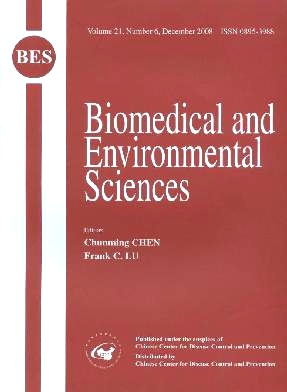Response of Lymphocytes to Radiation in Untreated Breast Cancer Patients as Detected with Three Different Genetic Assays
-
Key words:
- Micronucleus assay /
- Comet assay /
- hprt gene mutation /
- Radiosensitivity /
- Breast cancer
Abstract: To detect the response of lymphocytes to radiation in untreated breast cancer patients with three different genetic assays.Methods Blood samples were collected from 25 untreated patients and 25 controls.Each blood sample was divided into two parts:one was irradiated by 3-Gy X-ray (irradiated sample),the other was not irradiated (non-irradiated sample).The radiosensitivity of lymphocytes was assessed by comet assay,cytokinesis-block micronucleus (CBMN) assay and 6-TG-resistant cells scored (TG) assay.Results The baseline values of micronucleated cell frequency (MCF) and micronucleus frequency (MNF) in the patients were significantly higher than those in the controls (P<0.01),and 3-Gy X-ray induced genetic damage to lymphocytes in the patients increased significantly as compared with that in the controls as detected with the three genetic assays (P<0.01).The proportion of radiosensitive cases in the patient group was 48% for the mean tail length (MTL),40% for the mean tail moment (MTM),40% for MCE 44% for MNE and 48% for mutation frequencies of the hprt gene (Mfs-hprt),respectively,whereas the proportion of radiosensitive cases in the control group was only 8% for all the parameters.Conclusion The difference in the lymphocyte radiosensitivity between the breast cancer patients and the controls is significant.Moreover,there are wide individual variations in lymphocyte radiosensitivity of patients with breast cancer.In some cases,the radiosensitivity of the same patient may be different as detected with the different assays.It is suggested that multiple assays should be used to assess the radiosensitivity of patients with breast cancer before therapy.
| Citation: | JIAN-LIN LOU, ZHI-JIAN CHEN, JIANG WEI, JI-LIANG HE, LI-FEN JIN, SHI-JIE CHEN, WEI ZHENG, SHI-JIE XU. Response of Lymphocytes to Radiation in Untreated Breast Cancer Patients as Detected with Three Different Genetic Assays[J]. Biomedical and Environmental Sciences, 2008, 21(6): 499-508. |







 Quick Links
Quick Links
 DownLoad:
DownLoad: